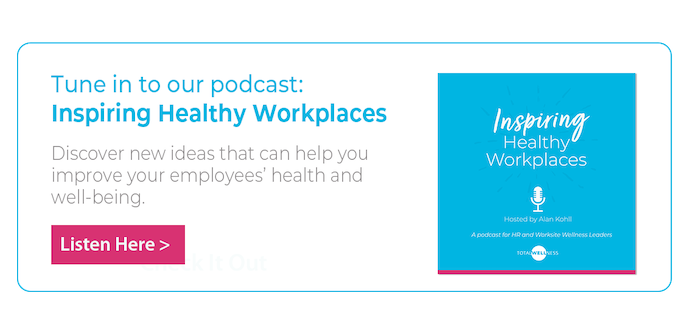Your contractor wouldn’t remodel your house without consulting you. Your hairdresser wouldn’t cut without asking what style you want. Your doctor wouldn’t treat you without discussing your symptoms. So why would you build your wellness program without feedback from your employees?

The Community Toolbox, a free public health resource put together by Kansas University, outlines one particular method you can use to create a wellness program WITH your employees, rather than creating a program FOR them. The template is based on the PRECEDE-PROCEED model, and will help you build a program your employees will love!
The model consists of four phases leading up to the implementation of your new wellness program – PRECEDE – and four phases of implementation and evaluation – PROCEED. The template starts by seeking employee feedback about a desired health outcome, flows to the logistics of implementation, and then returns to the health outcome for evaluation.
Phase 1: Identify the Desired Result
In this phase, it's important to work with your employees to figure out what they hope to gain by using a wellness program. Using surveys, word of mouth communication or even focus groups, you’ll be able to determine if your employees want to focus on increased physical activity, weight loss tips, work-life balance or even improved quality of life.
Phase 2: Identify the Issue
After you learn what health outcomes your employees value in a wellness program, you need to identify what stands in the way of those desired results. Are there certain behaviors that play a role? When you’ve learned the true issues, you need to be realistic and narrow in on the factors you can feasibly change.
Phase 3: Examine the Factors that Affect the Issue
Now that you know what behaviors influence the health outcomes, it’s important to identify what factors influence those behaviors. In this phase, you should analyze the knowledge, attitudes, beliefs and values held by your employees. What level of confidence do they have in their ability to make a health change? Aside from these internal variables, it’s important to check out the availability/accessibility of resources and policies that might affect your new wellness program.
Phase 4: Identify the Niche
You’ve examined the details surrounding the health outcomes that interest your employees. Now, take a look at where that sits in your company. Check out the current policies or administrative rules. Determine where your new wellness program will fit the best and how you can encourage participation.
Once you’ve prepared for implementation, it is important not only to follow your plans, but to evaluate them along the way. The next four phases outline the PROCEDE portion of the model.
Phase 5: Implementation
With all the planning you’ve done, this phase should be relatively easy. Here, you set up and carry out the wellness program you planned.
Phase 6: Process Evaluation
This first evaluation phase doesn’t dive into the results. Here, you simply need to analyze the process and be sure that you’re following the plan you laid out. Are you offering the services and incentives you had planned to offer?
Phase 7: Impact Evaluation
In this evaluation phase, it’s important to focus on the behaviors and contributing factors you identified rather than the final health outcome. Take a look at your new program and determine where it's having the best impact.
Phase 8: Outcome Evaluation
Finally, now that you’re sure the new wellness program has been successful in every other way, are you achieving the health outcomes that your employees wanted? Hopefully with the increased engagement of building a program WITH your employees, the outcome will be prominent. It’s important to keep in mind that some health benefits might not show until farther in the future!
The PRECEDE-PROCEED model is one that really can help you build a strong wellness program in which your employees will invest. It’s ultimately a template that ranges from planning to evaluation and everything in between. The model allows you to tailor-make a corporate wellness program that your employees will enjoy and want to participate in! How have you worked to create a wellness program WITH your employees, rather than FOR them?



